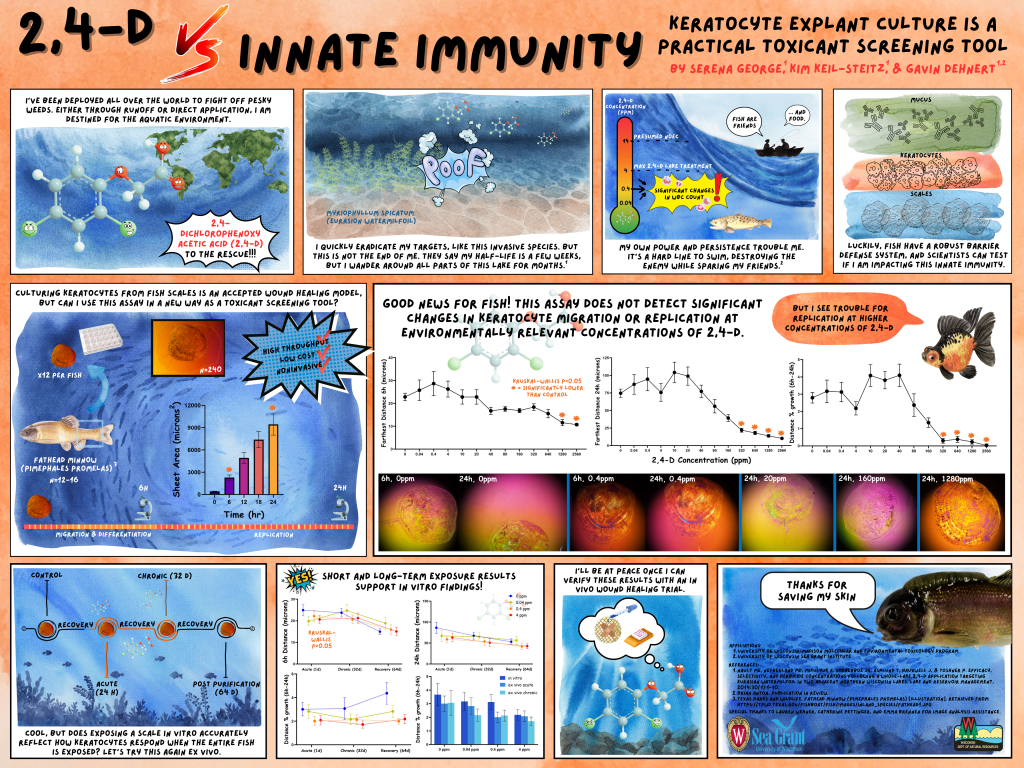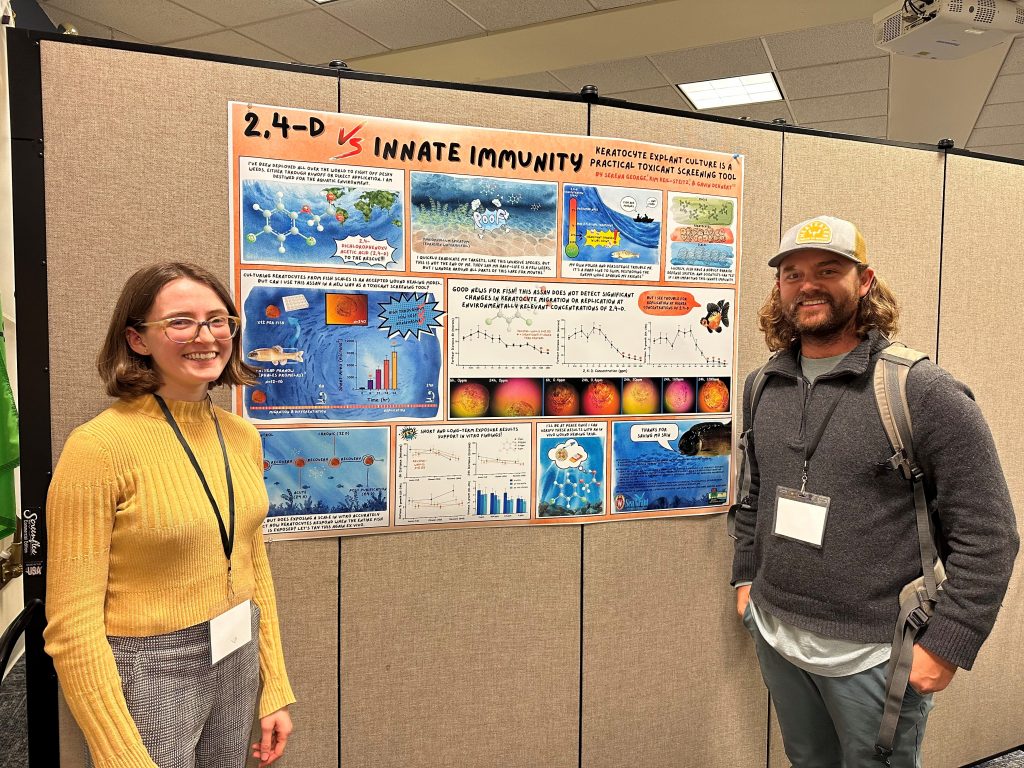
Serena George’s poster was runner-up for best poster for the Midwest SETAC Meeting poster session. She is working with Gavin Dehnert, Wisconsin Sea Grant’s emerging contaminants scientist. Image credit: Serena George, University of Wisconsin-Madison
By Serena George, University of Wisconsin-Madison
Research usually entails following strict protocols and replicating experiments. For the Midwest SETAC (Society of Environmental Toxicology and Chemistry) Meeting poster session, which was held in Milwaukee in mid-April, I thought I would take the opposite approach. I wanted to share the story behind my research and communicate science in a fun and accessible way – showing that research has an exciting plot of overcoming challenges, discovering new things and prompting more questions.
The meeting’s theme was “Applied Environmental Science in Addressing Emerging Contaminants.” My poster followed the story of one such contaminant, the herbicide 2,4-D (2,4-Dichlorophyenoxyacetic acid). Chemicals are often viewed as the “supervillains” in toxicology research, but I tried to frame my 2,4-D character in a different light as he struggled to come to terms with his power and worked diligently to ensure the safety of his fish friends. Emotion can often fuel a scientist’s passion for research, and I think characters can help portray this often-unspoken side of research in a unique way.
This comic-style poster has all the elements of a traditional poster, but I distilled the scientific details to only highlight the essential components (because I am standing at my poster during the session to fill in the details). I also incorporated tips from the #betterposter Generation 2 on YouTube (How to create a better research poster in less time). I used an attention-grabbing title with the main finding as the subheading. The key results and main figures are in the center, already translated for the reader into plain language.
I had so much fun designing this poster and seeing others engage with it. I think it was ultimately successful in attracting viewers and prompting in-depth conversations. Who knows, maybe one day there will be a sequel!

Serena George (left) and Gavin Dehnert with Serena’s poster at the Midwest SETAC Meeting. Submitted photo.


